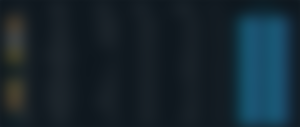Investing In ThorSwap Liquidity Pools
Every blockchain I use helps me learn about the possibilities and limitations of crypto space. That's why I like to transact on different blockchains.
I've been wondering about ThorChain for a long time. As the price of Rune, ThorChain's native coin, has almost doubled in the last week, I decided to devote half a day.

Photo by Nengoflow
ThorChain is a decentralized cross-chain liquidity network. It can be thought of as a marketplace where coins take place in their native form. The difference from centralized exchanges is that Thorchain is decentralized and autonomous.
Thorchain is a blockchain built using the Cosmos SDK in 2018. It is secured by Tendermint BFT (Byzantine Fault Tolerance) consensus mechanism.
All swaps on the Thor blockchain are made in exchange for Rune. There is a single liquidity pool for each coin, with Rune positioned opposite each coin. Therefore, when Ethereum and Bitcoin are wanted to be swapped, Ethereum is converted to Rune, and Rune is converted to Bitcoin. Thorchain still supports native BTC, ETH, BNB, LTC, and Doge swaps.
It is possible to use Thorchain through many wallets, but I decided to use Keystore in line with the suggestions I came across on the internet.
The dapp I preferred to use was Thorswap Finance. After clicking the connect button on https://app.thorswap.finance/wallet, ticking the "Create Keystore" option and setting a password is enough to create the wallet. A text file is generated when creating the wallet. We download the file and save it in a suitable folder. The file in question contains a key used in the log-on phase. Also, of course, a password is required.
Keystore opens an account automatically for each coin supported by Thorchain, just like in centralized exchanges. To be able to operate on these accounts, we need to pay the gas fee as native Rune.
Similar to Leo, Rune has different variants such as native, Binance.Rune, Ethereum.Rune. Trading on https://app.thorswap.finance/ requires native Rune and Binance does not support native Rune. So we can't buy native Rune from Binance or any other exchange and send it to Thorchain.
I bought BNB from Binance and sent it to my Keystore account. It is necessary to choose Binance Beacon Chain before the transfer, it gives an error if we choose Binance Smart Chain anyway.
When the BNBs I sent via Binance reached my Keystore wallet, it was time to swap the BNB with Rune. For transactions on Thorchain, it is necessary to pay Thor's transaction fee as well as the transaction fee of the relevant blockchain. When converting half of BNB to Rune, I had no issues with not having Rune on my wallet before the trade. I would like to note that this was not the case on other blockchains. Rune transaction fees are around 3-4 cents, so the double charge isn't a big problem.

We do not have to add an equal monetary amount of coins to the liquidity pools running on Thorchain. For example, we can add only BNB or only Rune. The system adjusts the coin position to 50%-50% after adding. On the other hand, this feature can only be used effectively in very small amounts. The system did not even allow me to add $50 in only BNB, the reason being the unbalance of the pools. The transactions I made on Thorswap were completed in 5-6 seconds, some transactions took longer. This could of course also be an issue with the BNB Beacon Chain.
The return of the BNB-Rune pool is 53% annually. The returns on the pools with other cryptocurrencies are shown in the image below.

Detailed monetary reporting on the liquidity added to Thorswap liquidity pools is made over https://thoryield.com/. The reporting time on ThorYield is quite long, and performance needs to be improved.
Conclusion
Thorchain seemed quite different to me after EVM compatible networks like BSC, Polygon, Avalanche, and Fantom. The use of native versions of coins instead of wrapped versions, as in many other networks, is an important feature, as there are security issues with trading a coin outside of its own blockchain. The positioning of each coin against the Rune is good for the effective use of liquidity. On the other hand, Thorchain is neither a Hive nor EVM compatible network in terms of user experience.
Founded by anonymous developers in 2018, Thorchain does not require KYC from customers like centralized exchanges. They are working to buy and sell privacy coins natively on the platform. Their vision of decentralization and anonymity has an anarchist side. I think the Rune should be in the top 25 of the market capitalization rankings instead of 55th.
I have not invested in Rune yet, as I have focused on Hive and Leo-based investments, but I think I can invest soon since it is in my list of coins that deserve a high place in the market cap list along with Fantom and Cosmos.
Thank you for reading.
@nengoflowflow


